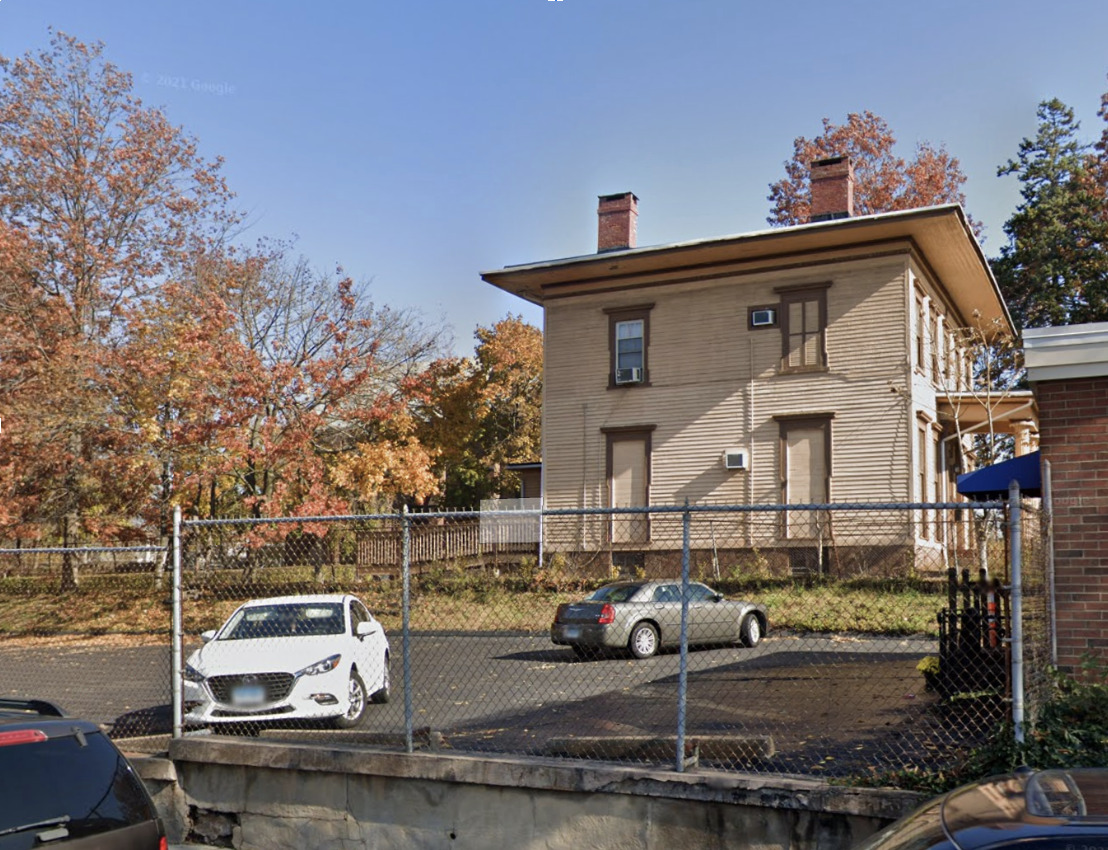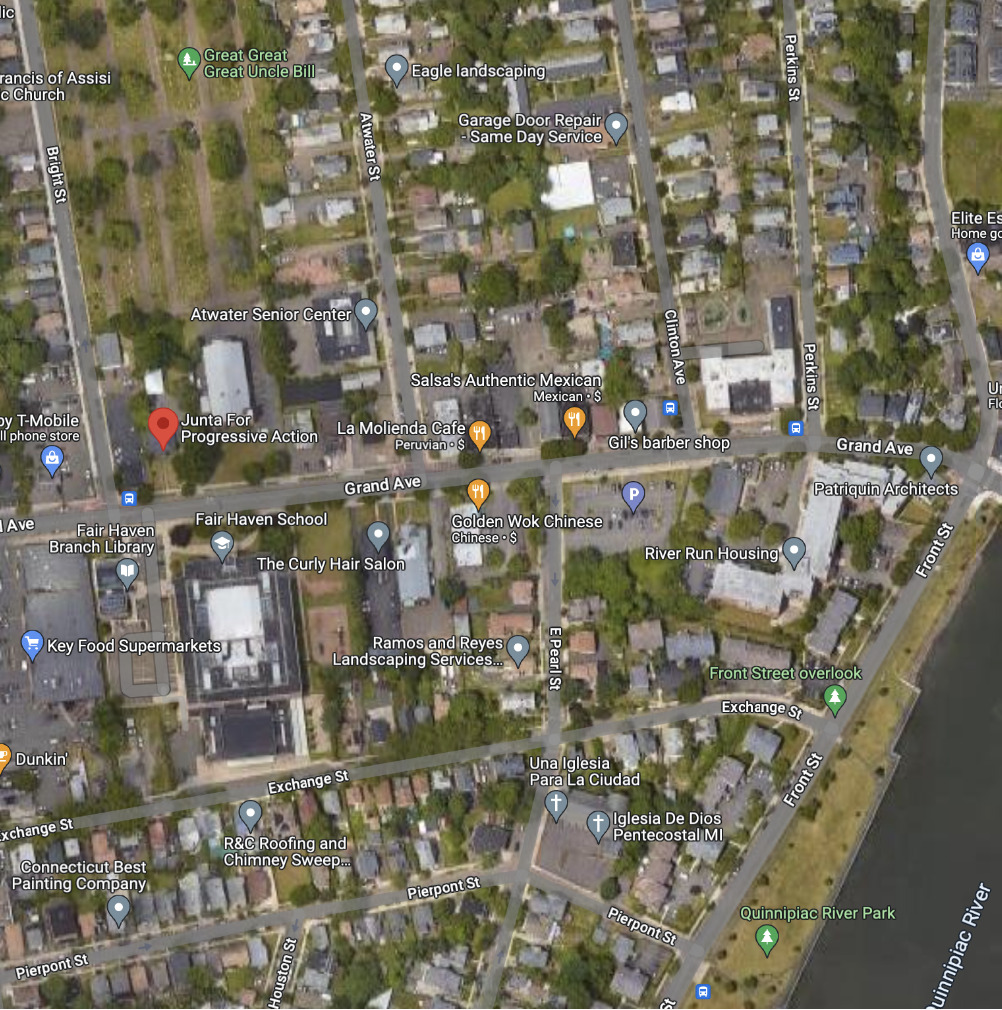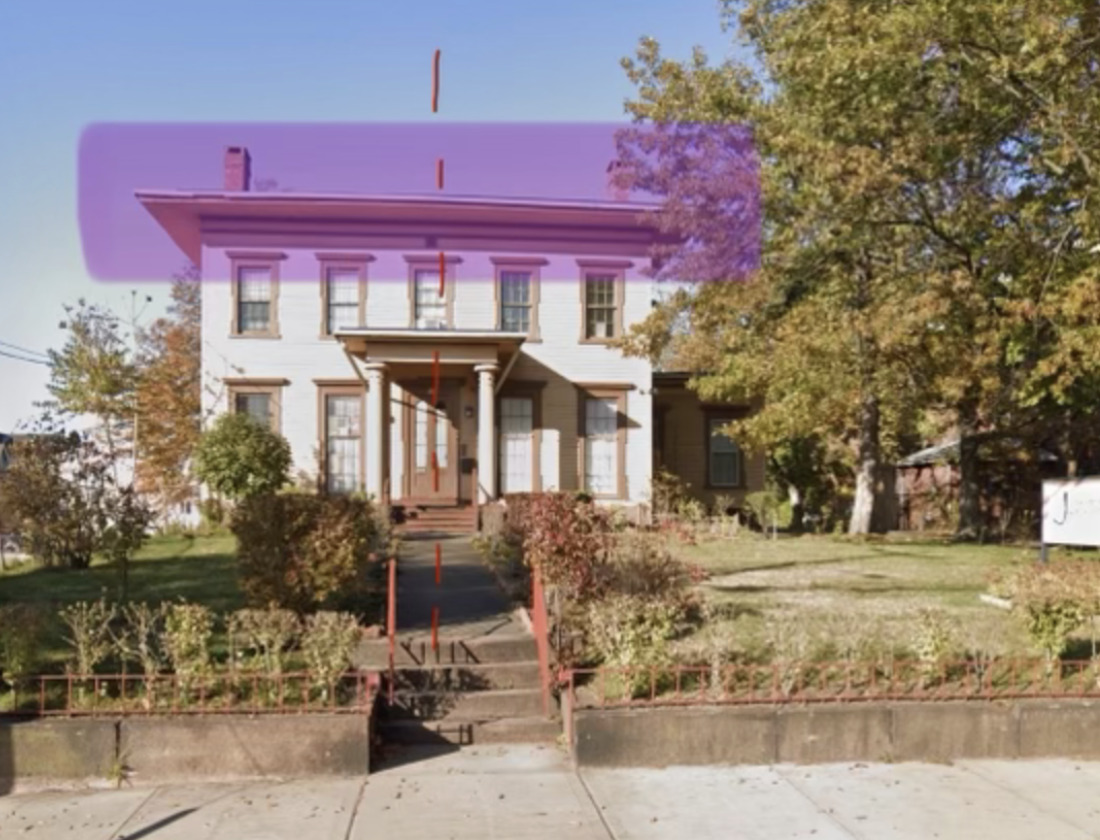
Junta for Progressive Action
169 Grand Ave, New Haven, CT 06513
1978 - Current: Current building (residential) was constructed
Current: Junta occupies physical tenancy at 169 Grand Avenue
The gaps in between chronological data were not possible to find, such as 1) when Junta relocated to this location, 2) What kind of structures existed on the lot between 1852 and 1978, 3) How many tenants lived in the current building prior to Junta moving in.
Prior to European settlement, Fair Haven was used by the Momauguin group of Quinnipiac Native Americans for farming. In 1679, Fair Haven was formed as a village intended to house industrial workers by Herman Hotchkiss, who made numerous investments into the formation of Fair Haven. Because of its proximity to the Mill and Quinnipiac rivers, the area also produced a large source of oysters and other river products, and eventually established manufacturing plants and a brewery. Initially only reachable by boat, foot, or horseback, the first roads were laid for horse-drawn vehicles. In 1784, Fair Haven officially became a part of the city of New Haven.
By the 1930s, Fair Haven saw an influx of black and Puerto Rican families, leading to redevelopment along the Quinnipiac River. As part of an urban renewal program in the 1960s, over 100 Fair Haven households were displaced. In 1978, the area became preserved as a historic district, and in the early 1980s, many buildings along the Grand Avenue were renovated. It’s quite powerful to think about the history of Fair Haven, specifically this historic district that Junta is now in, when understanding community acceptance and the legacy of discriminatory housing practices.
Google Maps, Google, www.google.com/maps/@41.3091486,-72.8940148,3a,75y,19.71h,86.54t/data=!3m7!1e1!3m5!1s24blJ8anvXbkYsq74cObGQ!2e0!6shttps:%2F%2Fstreetviewpixels-pa.googleapis.com%2Fv1%2Fthumbnail%3Fpanoid%3D24blJ8anvXbkYsq74cObGQ%26cb_client%3Dsearch.gws-prod.gps%26w%3D86%26h%3D86%26yaw%3D7.753944%26pitch%3D0%26thumbfov%3D100!7i16384!8i8192?entry=ttu. Accessed 5 Oct. 2023.
“Junta for Progressive Action.” Junta, www.juntainc.org/about. Accessed 5 Oct. 2023.
“Latinos in Greater New Haven: Emerging Influence – Growing Opportunity.” The Community Foundation for Greater New Haven, 7 May 2014, www.cfgnh.org/articles/latinos-in-greater-new-haven-emerging-influence-growing-opportunity.
“Quinnipiac River.” The New Haven Preservation Trust, nhpt.org/quinnipiac-river. Accessed 5 Oct. 2023.
“The Yale-New Haven Teachers Institute.” Yale New Haven Teacher Institute, teachersinstitute.yale.edu/curriculum/. Accessed 5 Oct. 2023.
Researcher
Nina Lin
Date Researched
Entry Created
N/A Date
Last Updated
N/A Date
Historic Name
Style
Colonial / GeorgianCurrent Use
Non-Profit (ex. Planned Parenthood, Salvation Army), Detached Single-Family HouseEra
1950-1980Neighborhood
Fair HavenTours
Year Built
1978
Architect
Unknown
Current Tenant
Private/Residential (1978), Junta for Progressive Action (1969)
Roof Types
OtherStructural Conditions
Street Visibilities
Yes
Threats
None knownExternal Conditions
Dimensions
Lot size: 0.573, Total Square Footage: 2,930
Street Visibilities
Yes
Owner
Looking under New Haven’s Tax Assessor Database and other assessor sites, this property is not listed on any public database. There are a few possible reasons why this is the case: If this property has been purchased through an LLC (not uncommon for nonprofit organizations such as Junta for Progressive Action), or simply because some records in some jurisdictions have not been updated yet. It could also have a protected address, since it was once a residential home (and is still listed as such on many real estate sites).
Ownernishp Type
Private;Non-profit
Client
I was unable to find a confirmed answer to this, but it seems that this property has been converted (like many multi-bedroom homes in New Haven) into a different nonprofit building space. It is likely that Junta for Progressive Action has commissioned an interior renovation to make the property more suitable for wrap-around social services and development activities, rather than private living spaces.
Historic Uses
Residential



Comments
You are not logged in! Please log in to comment.